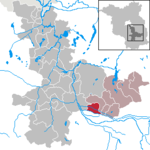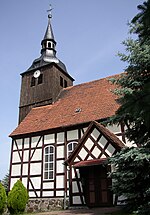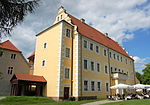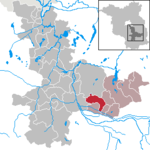Lower Lusatia
Former duchies of the Kingdom of BohemiaGeography of LusatiaHistorical regions in GermanyHistorical regions in PolandLands of the Bohemian Crown ... and 4 more
Pages with Lower Sorbian IPAPages with Upper Sorbian IPARegions of BrandenburgRegions of Saxony

Lower Lusatia (German: Niederlausitz; Lower Sorbian: Dolna Łužyca [ˈdɔlna ˈwuʒɨtsa]; Upper Sorbian: Delnja Łužica [ˈdɛlnʲa ˈwuʒitsa]; Polish: Łużyce Dolne; Czech: Dolní Lužice) is a historical region in Central Europe, stretching from the southeast of the German state of Brandenburg to the southwest of Lubusz Voivodeship in Poland. Like adjacent Upper Lusatia in the south, Lower Lusatia is a settlement area of the West Slavic Sorbs whose endangered Lower Sorbian language is related to Upper Sorbian and Polish.
Excerpt from the Wikipedia article Lower Lusatia (License: CC BY-SA 3.0, Authors, Images).Lower Lusatia
Märkische Heide
Geographical coordinates (GPS) Address Nearby Places Show on map
Geographical coordinates (GPS)
| Latitude | Longitude |
|---|---|
| N 52 ° | E 14 ° |
Address
Krugauer Heide
15913 Märkische Heide
Brandenburg, Germany
Open on Google Maps









